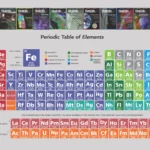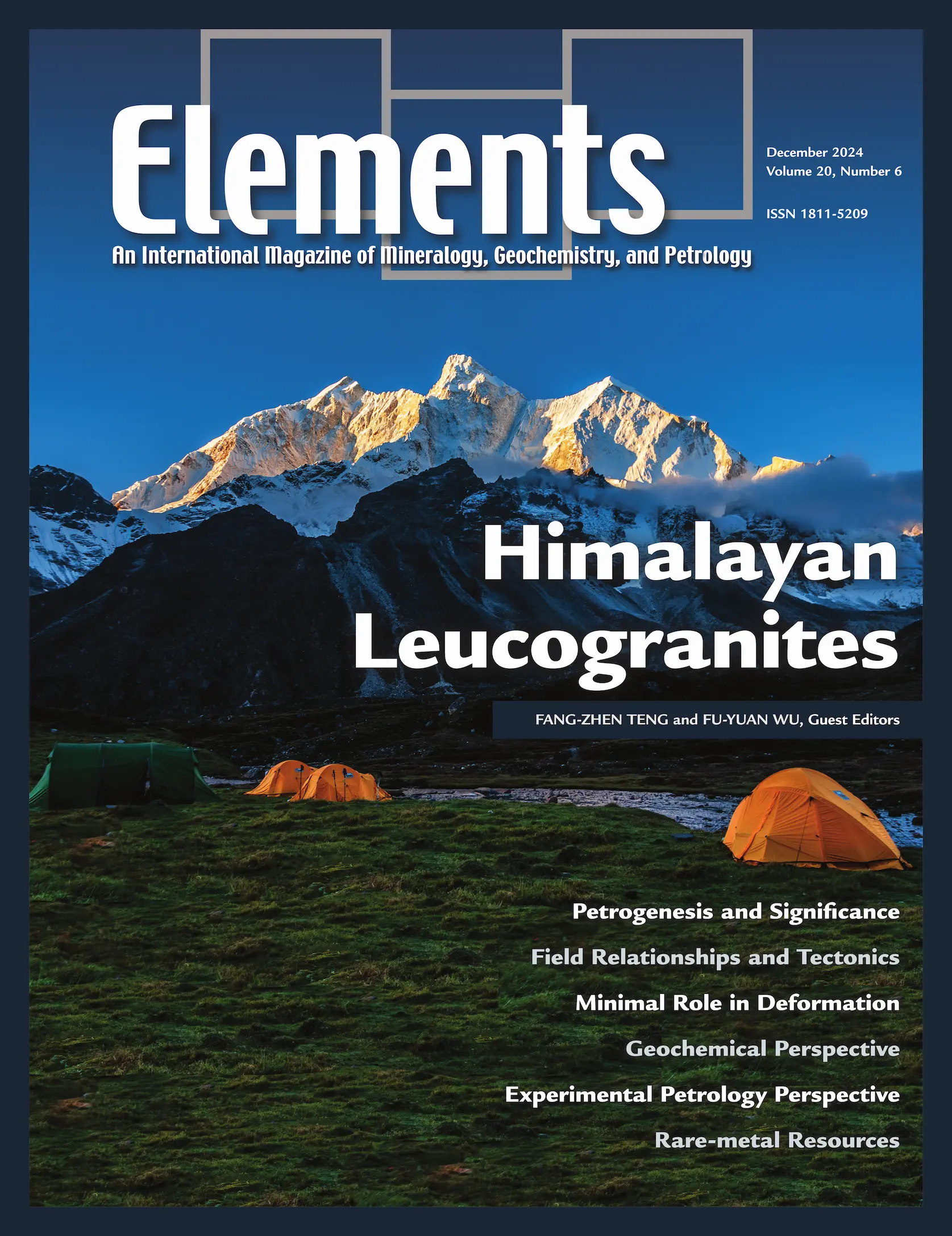
Periodic Table of Elements
October 26, 2024Himalayan Leucogranites, December 2024, Vol. 20, No. 6
$20.00
Himalayan leucogranites crop out intermittently over 2000 km along the Himalayan crest in the Himalayan-Tibetan plateau. They constitute some of the most well-studied granites in the world. They are considered to be purely crustal-derived melts and indicators of collisional orogenesis, and have greatly improved our general understanding of crustal anatexis, differentiation of felsic magmas, and tectonic evolution of the Himalayan-Tibetan Orogen.
Himalayan Leucogranites
December 2024, Vol. 20, No. 6
Himalayan leucogranites crop out intermittently over 2000 km along the Himalayan crest in the Himalayan-Tibetan plateau. They constitute some of the most well-studied granites in the world. They are considered to be purely crustal-derived melts and indicators of collisional orogenesis, and have greatly improved our general understanding of crustal anatexis, differentiation of felsic magmas, and tectonic evolution of the Himalayan-Tibetan Orogen. They provide a rare opportunity to explore the feedback relationships among geodynamics, tectonics, and magmatism in a classic continental collisional context. In this issue, we will describe our current understanding of the petrogenesis and significance of the Himalayan leucogranites by focusing on their tectonic and geodynamic background, source rocks, petrology, geochemistry, and links to orogenesis and economic resources.
Why You’ll Love Elements Magazine:
- Expert Contributors: Articles written by renowned researchers in the field of geoscience.
- Engaging Content: Join a community of readers who are passionate about Elements.
- Exceptional Quality: Each issue is printed on high-quality paper with stunning visuals and detailed illustrations that bring complex scientific concepts to life.
Order your copy of the December 2024 issue of Elements magazine today and explore Himalayan Leucogranites.
Related products
-
Fluids in Planetary Systems, January 2005, Vol. 1, No. 1
$20.00Water and other geofluids play an important role in the geochemical and rheological evolution of the Earth and other bodies in the solar system. These fluids are responsible for the formation of hydrothermal mineral deposits, affect eruption behavior in volcanic systems and the geophysical properties of the mantle, and significantly affect the way in which rocks deform and fracture.
-
Phosphates And Global Sustainability, April 2008, Vol. 4, No. 2
$20.00Phosphorus is a unique element: it is essential to the existence of all living forms, and as such controls biological productivity in many terrestrial and marine environments; but when in excess, it leads to uncontrollable biological growth and water-quality problems. This has become a common environmental issue, resulting from our careless use of phosphorus in agriculture, yet phosphate ore deposits, from which fertilizers are produced, are a finite natural resource.
-
Energy: A Geoscience Perspective, June 2007, Vol. 3, No. 3
$20.00The issue of energy resources in the future may be one of the most important in the 21st century. Future climate change and the ways to abate it while still supplying needed energy will impact future political relations, world economics, human health, and the environment.




